Zenjan (Bidgeneh and Qoltuq) Rugs

The Zenjan’s establishment is attributed to
the semi-legendry Shah of Persia, Ardeshir
Papakan, the founder of the Sasanid dynasty.
Actually it is known that the area flourished
under the rule of two last ancient dynasties
Arsacid and Sasanid, being located on the
important Khorasan Road, and blessed by
fire-temples on its mountains.

Knife of Zanjan

Dome of Soltaniyeh, near zanjan
Nowadays the mountains are famous for their
productive mines and the city and villages
around have a high reputation for handy
crafts. Inside Iran the most well-known
Zenjan’s craft is bladesmithing, which is
believed to be an ancient heritage, and beyond its borders rugs and other sorts of
carpets are recalled by the names of the city,
Zanjan or Zenjan, and villages around such as
Qoltuq and Bidgeneh.
Technical aspects and the structure of Zenjan Rugs

Bazaar of Zanjan
What people call “Zenjan” are actually
various pieces of rugs and carpets woven in
different rural areas, being gathered
ultimately in Zenjan Bazar. Those come from
Hamedan routs differ, technically as well as
aesthetically, from the ones from Kurdish
side (Bidgeneh). Tabriz way has its own
influence, of course, and so you would also
find pieces similar to typical Azarbaijan
styles, all of which are roughly called Qoltuq.
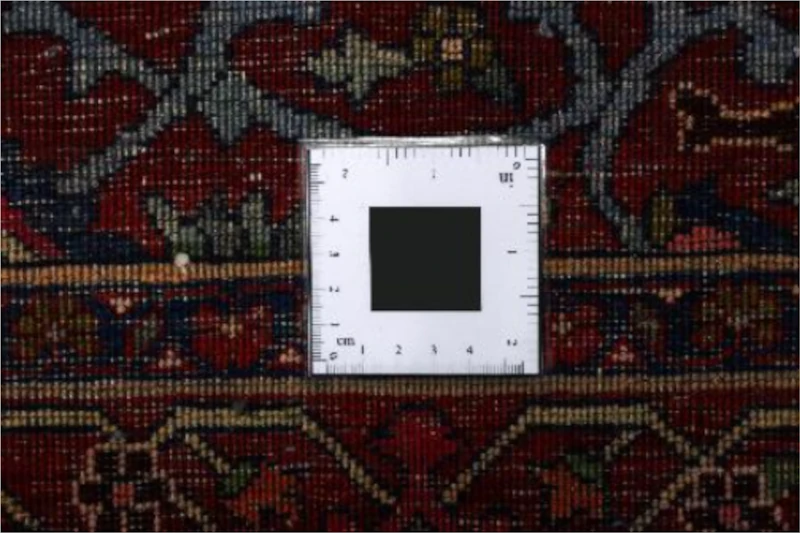
Back of Bidgeneh rug
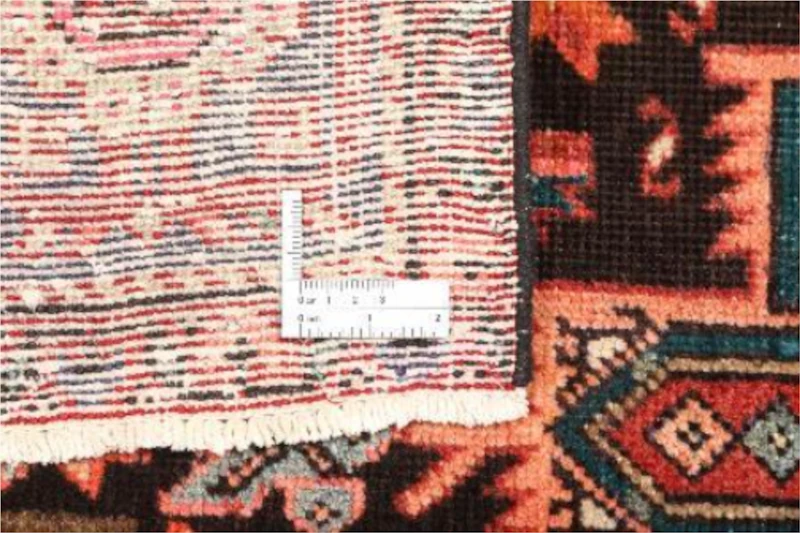
Back of Qoltuq rug

Back of Qoltuq rug
Except Hamedan-styled ones, which are
Persian-knotted and single-wefted, the others
are double-wefted with symmetrical (Turkic)
knots. The ones from Kurdish side are finer
in weave and are deeply under the influence
of Bijar rugs. In other word, designs, colors and structure are the same but in a somehow
clumsy way. In the case of structure this
clumsiness appears in the thickness of weave
which leads to a rigid back. But these are all
true in the unfair comparison with brilliant
Bijars. Zenjan Kurdish rugs are the best
amongst Zenjans and far more affordable
than Bijars.
‘Khamseh, is another term, a short-lived
name for the southern parts of Zanjan
province under the Qajars rule, which
remained on some low quality woven pieces.
These are also single-wefted with cotton
warp and weft.
Dyeing and painting of Zenjan rugs
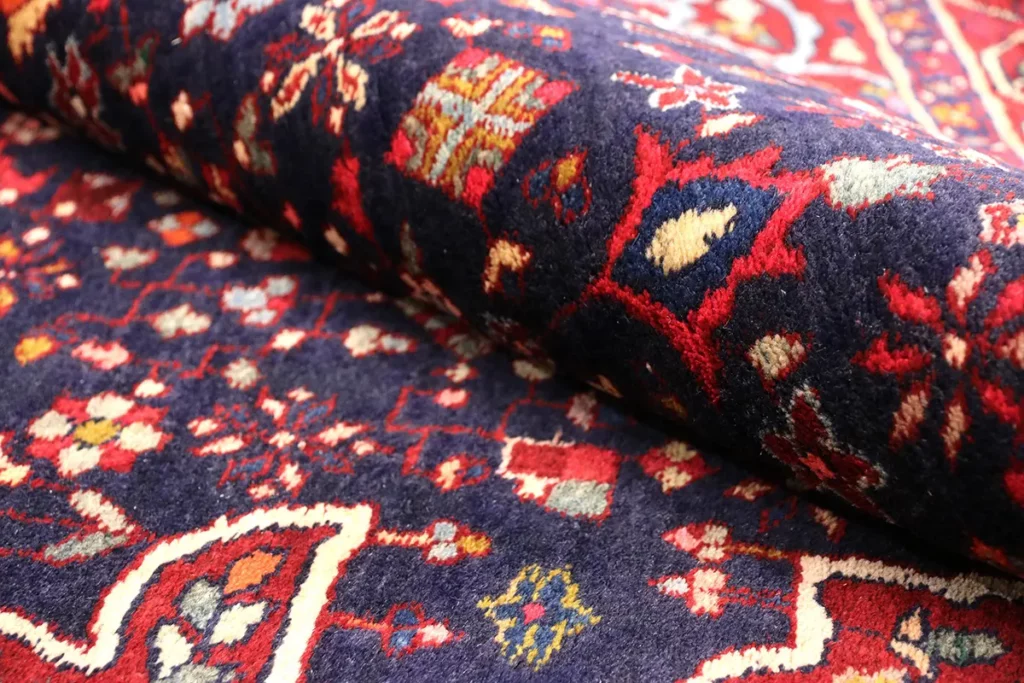
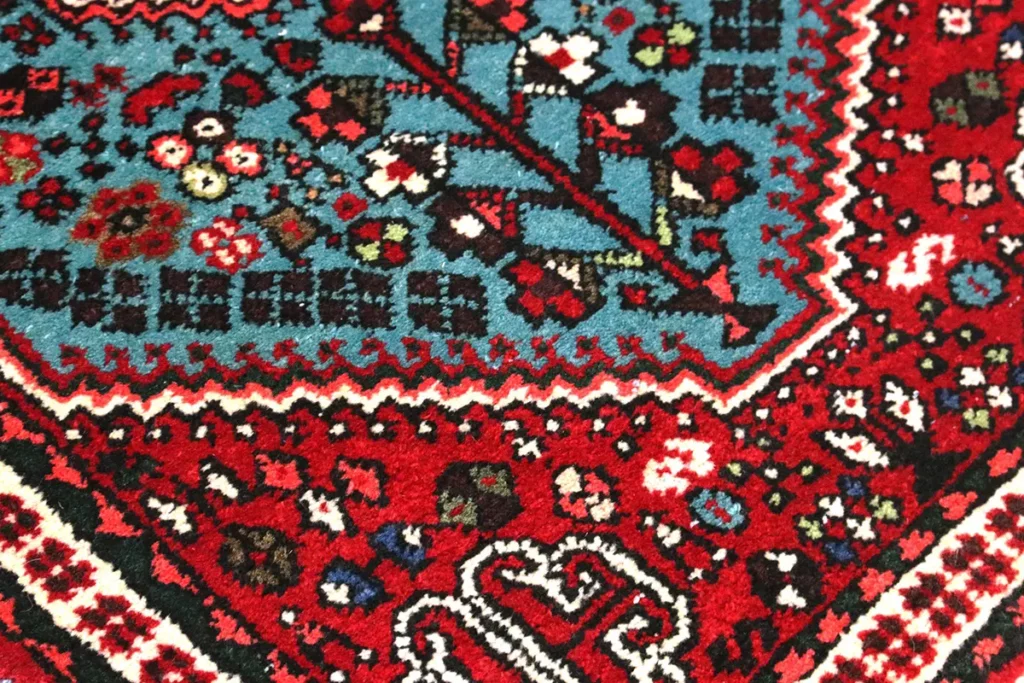
Black has roughly no place on Persian
pallets, except in Zenjan. It is a big exception
of course, but after all, playing as dark navy
blue, it doesn’t make a dominant effect on the
total harmony. More interesting, the exception concerns
Hamedan and Qoltuq styles alike, with their
different structures and designs.
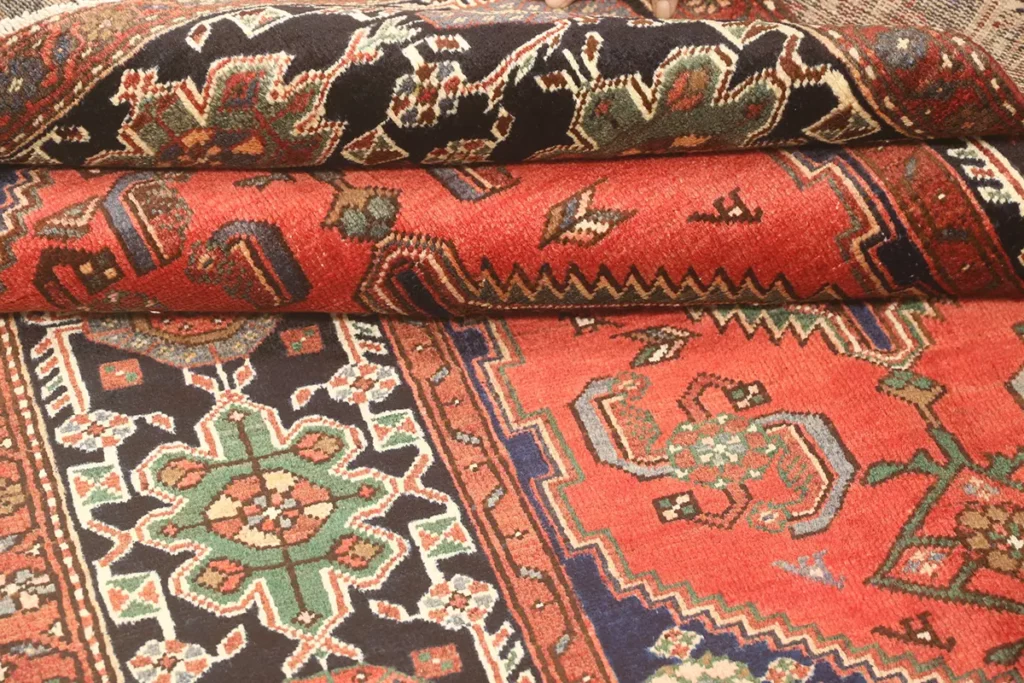

Sky blue, too, could be seen in different
types, and also a brownish red similar to dry
leaves, as well as vivid shades of scarlet,
yellow and orange.
Enjoying mountainous nature, herbal and
mineral dyes are of best quality.
Designs and patterns of the Zenjan rugs
Similar to Bijars, Bidgenehs tend to be
double-medallioned or “medallion-in-
medallion” with wide margins and geometric
forms. Unlike Bijars’ accurately orderd
motives, Bidgenehs’ are more folky and a bit
massive in appearance. Qoltuqs are recognizable with their
medallion-and-pendant designs with Lachaks
in the corners and narrower margins.
Hamedan style includes roughly all basic
Persian tradition such as Herati Vagireh
(repetitive pattern), Botteh-based designs and
different types of medallion.
All Zenjan areas share a reputation for
Kallegi weaving, which is a long and rather
wide runner, a preferable size in northwestern
Iran.


